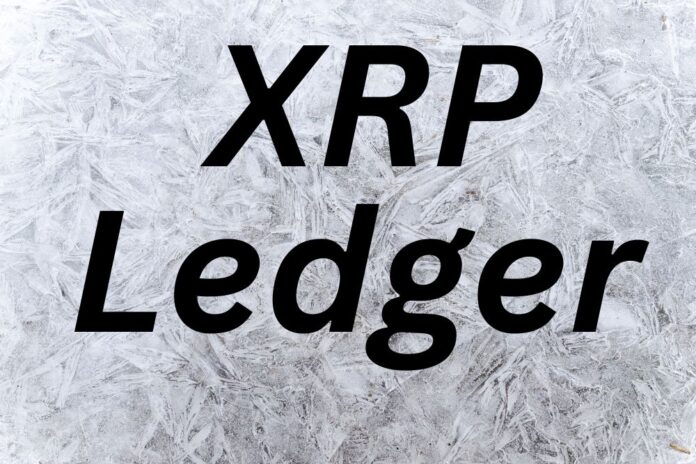In the rapidly evolving world of finance, blockchain technology is redefining the landscape. Monerex, a visionary fintech company, is at the forefront of this revolution, building the first Web 3.0 bank on the XRP Ledger (XRPL).
The groundbreaking initiative announced on Monerex’s official X handle promises to bridge traditional banking and decentralized finance (DeFi), unlocking unparalleled opportunities for individuals and institutions alike.
The Dawn of Web 3.0 Banking
Web 3.0 banking represents a seismic shift in the financial paradigm, characterized by decentralization, security, and accessibility. Its decentralized architecture revolutionizes traditional finance by transferring control from centralized institutions to open-source, community-driven networks.
This fundamental shift enables peer-to-peer transactions, eliminating intermediaries and reducing costs. Decentralized networks, such as blockchain and distributed ledger technology, facilitate secure, transparent, and tamper-proof transactions.
Community-driven governance ensures that decision-making processes are democratic, fair, and responsive to user needs. By decentralizing financial infrastructure, Web 3.0 banking promotes financial inclusivity, innovation, and resilience.
Web 3.0 banking prioritizes security through immutable, cryptographic transactions, safeguarding users’ assets and data. Cryptographic techniques, such as public-key cryptography and hash functions, ensure the integrity and confidentiality of transactions. Immutable ledgers prevent tampering and revision, providing an auditable record of all transactions.
Advanced security protocols, including multi-signature wallets and smart contract-based escrow, further protect users’ funds. its robust security framework mitigates risks associated with traditional banking, such as fraud, cyberattacks, and data breaches.
The accessibility advantage of Web 3.0 banking ensures borderless and inclusive financial ecosystems, bridging geographical and socio-economic divides. Digital identity verification and Know-Your-Customer (KYC) protocols enable seamless onboarding, regardless of users’ location or background. Decentralized networks facilitate real-time, low-cost transactions, making financial services accessible to underserved populations.
The platform also integrates diverse financial instruments, such as cryptocurrencies, stablecoins, and traditional currencies, expanding users’ financial options. By democratizing access to financial services, Web 3.0 banking unlocks economic opportunities, promotes financial literacy, and reduces inequality.
Why XRP Ledger?
Monerex’s innovative approach leverages the XRPL’s scalability, security, energy efficiency, and decentralization to create a robust Web 3.0 banking infrastructure.
The XRP Ledger boasts exceptional scalability, processing transactions at an unprecedented rate. With the ability to handle over 1,500 transactions per second, the XRPL surpasses traditional payment systems and most blockchain networks.
This high transaction throughput and fast settlement times of 2-5 seconds, enable seamless and efficient transactions. The XRPL’s scalability makes it an ideal solution for high-volume payment processing, micropayments, and real-time settlement applications.
These distinct advantages ensure high transaction throughput, fast settlement, minimal carbon footprint, and a truly open-source, community-driven network.
Monerex and Ripple: A Symbiotic Partnership
Within the XRP Ledger ecosystem, Monerex carves out its niche by providing an all-encompassing Web3 banking platform. Unlike Ripple, which excels in payment solutions, Monerex unlocks the full potential of decentralized finance.
The symbiotic relationship between Ripple’s payment infrastructure and Monerex’s banking expertise exemplifies the benefits of strategic collaboration, driving growth and interoperability in the decentralized finance landscape
We are on twitter, follow us to connect with us :- @TimesTabloid1
— TimesTabloid (@TimesTabloid1) July 15, 2023
The Future of Finance
Besides Monerex’s Web 3.0 bank unlocking new financial products and services, the pioneering effort paves the way for mainstream adoption of Web 3.0 banking.
As the first Web 3.0 bank on XRPL, it demonstrates the viability of decentralized finance, driving increased recognition and acceptance. Regulatory clarity and institutional investment will follow, solidifying Web 3.0 banking’s position in the financial landscape.
This groundbreaking initiative creates unprecedented opportunities for investors, institutions, and individuals. Web 3.0 banking’s borderless architecture enables global access, attracting new users and capital. As the ecosystem grows, so will the demand for decentralized financial services, driving innovation and economic expansion.
While pioneers like Bitcoin, Ethereum, Cardano, and Polkadot reshape the banking landscape with various innovations, Monerex revolutionizes the space with its XRP Ledger-based solution, seamlessly merging swift transactions with the decentralized principles of Web3.
Disclaimer: This content is meant to inform and should not be considered financial advice. The views expressed in this article may include the author’s personal opinions and do not represent Times Tabloid’s opinion. Readers are urged to do in-depth research before making any investment decisions. Any action taken by the reader is strictly at their own risk. Times Tabloid is not responsible for any financial losses.
Follow us on Twitter, Facebook, Telegram, and Google News


